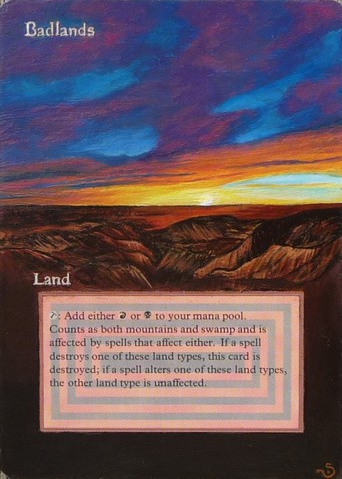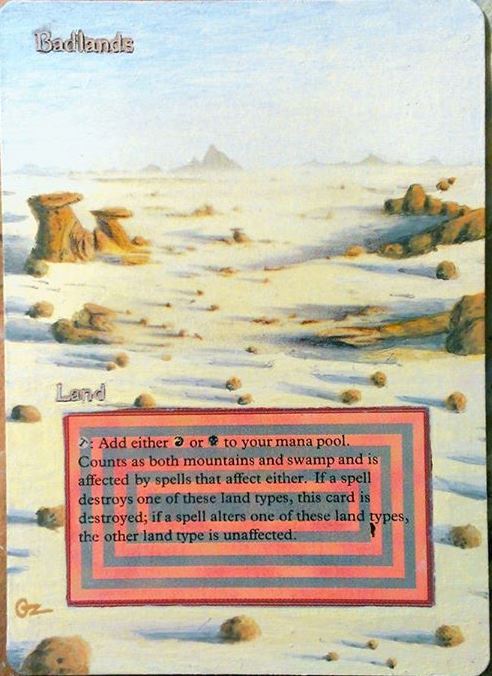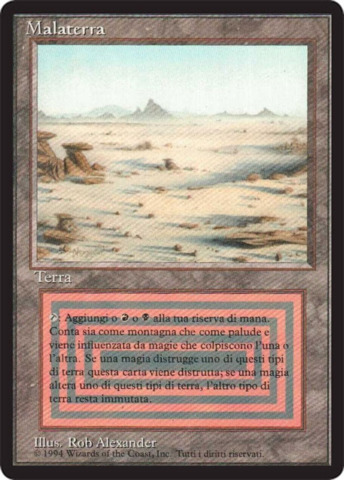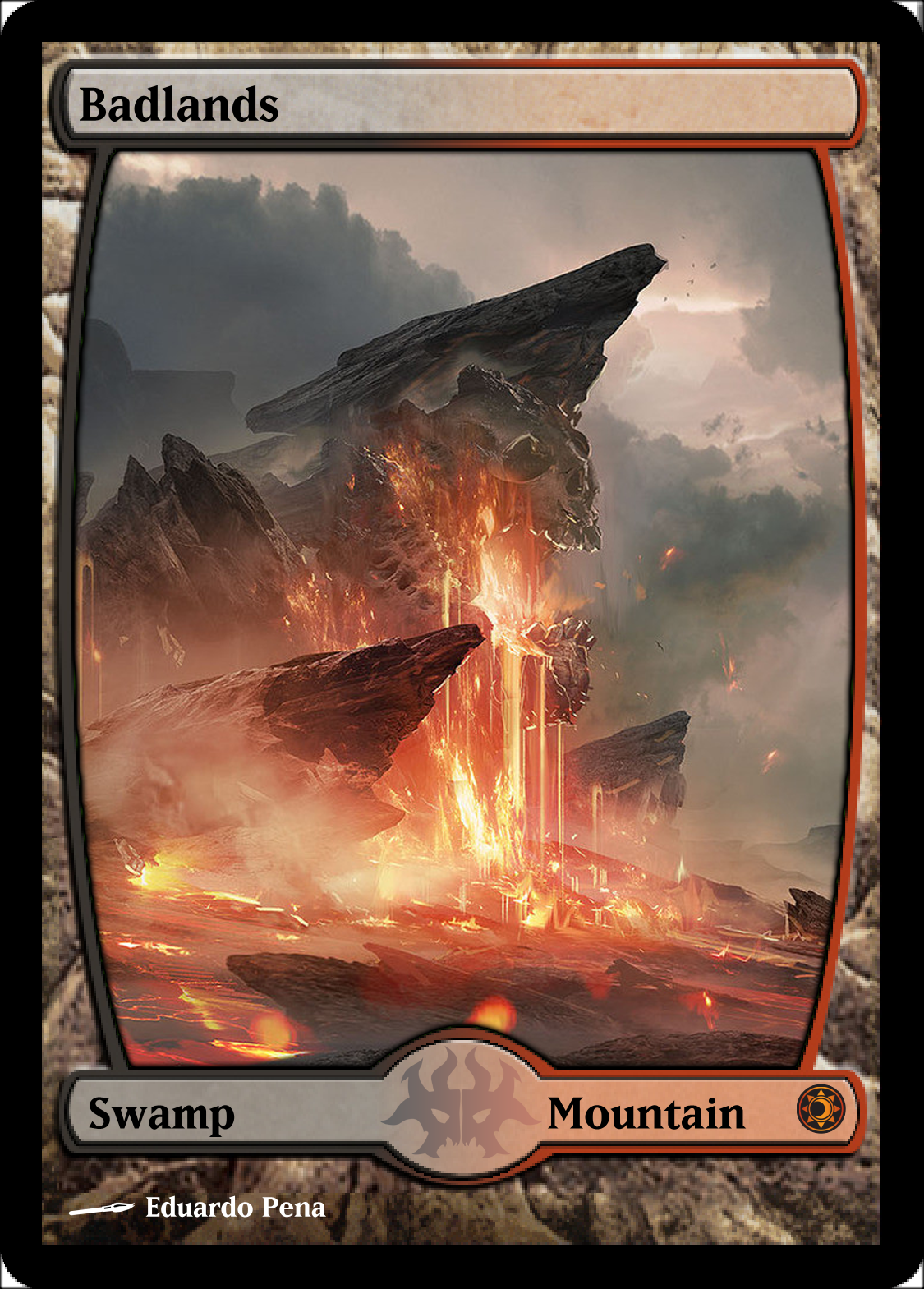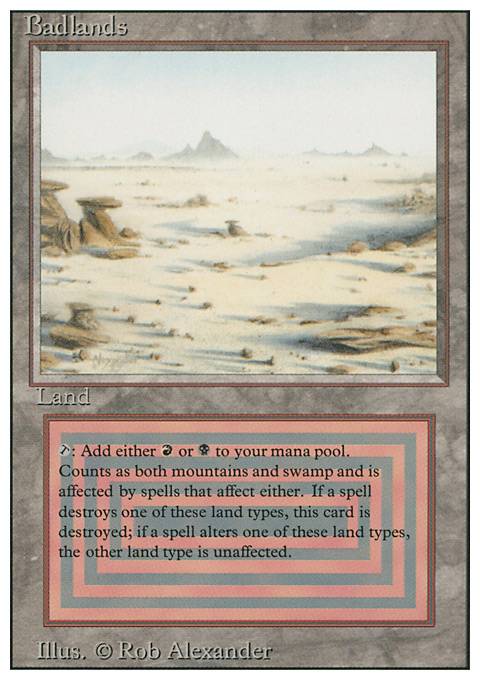
Combos Browse all Suggest
Legality
| Format | Legality |
| 1v1 Commander | Legal |
| Archenemy | Legal |
| Canadian Highlander | Legal |
| Casual | Legal |
| Commander / EDH | Legal |
| Commander: Rule 0 | Legal |
| Custom | Legal |
| Duel Commander | Legal |
| Highlander | Legal |
| Legacy | Legal |
| Leviathan | Legal |
| Limited | Legal |
| Oathbreaker | Legal |
| Oldschool 93/94 | Legal |
| Planechase | Legal |
| Quest Magic | Legal |
| Tiny Leaders | Legal |
| Vanguard | Legal |
| Vintage | Legal |
Badlands
Land — Swamp Mountain
(: Gain or .)
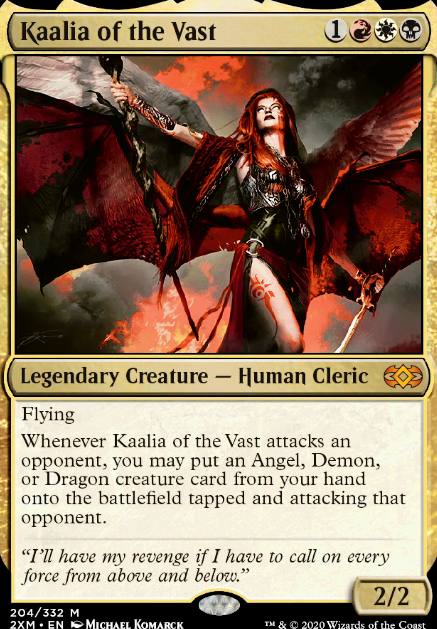
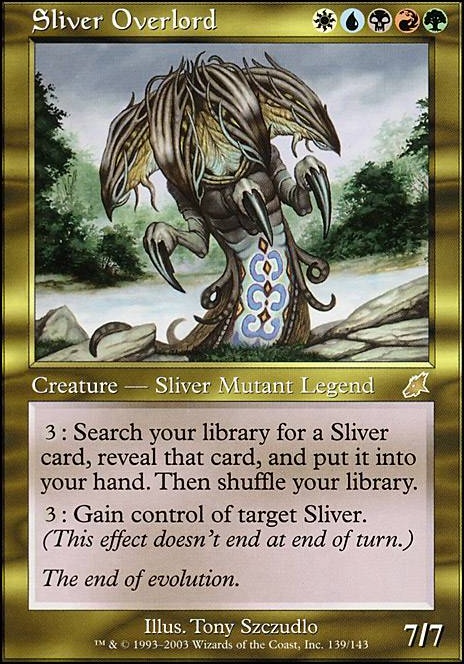
![Sophina, Spearsage Deserter feature for Wernog & Sophina, Innistrad Militia [PRIMER]](http://static.tappedout.net/mtg-cards-2/universes-within/sophina-spearsage-deserter/femme_fatale-sophina-spearsage-derserter-slx-16469764730.png)
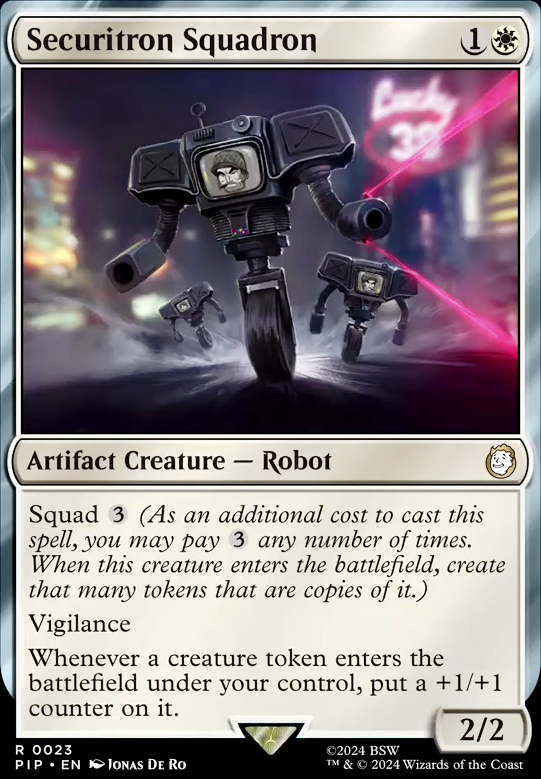
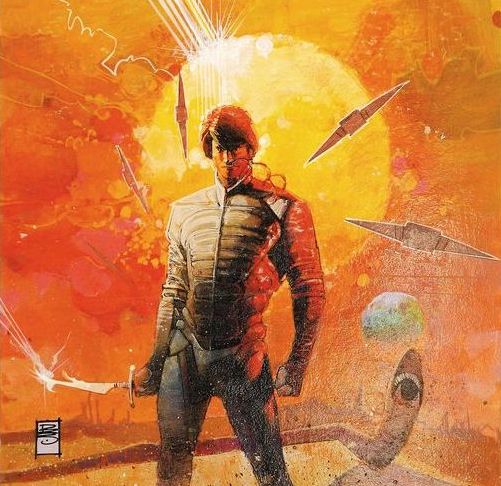
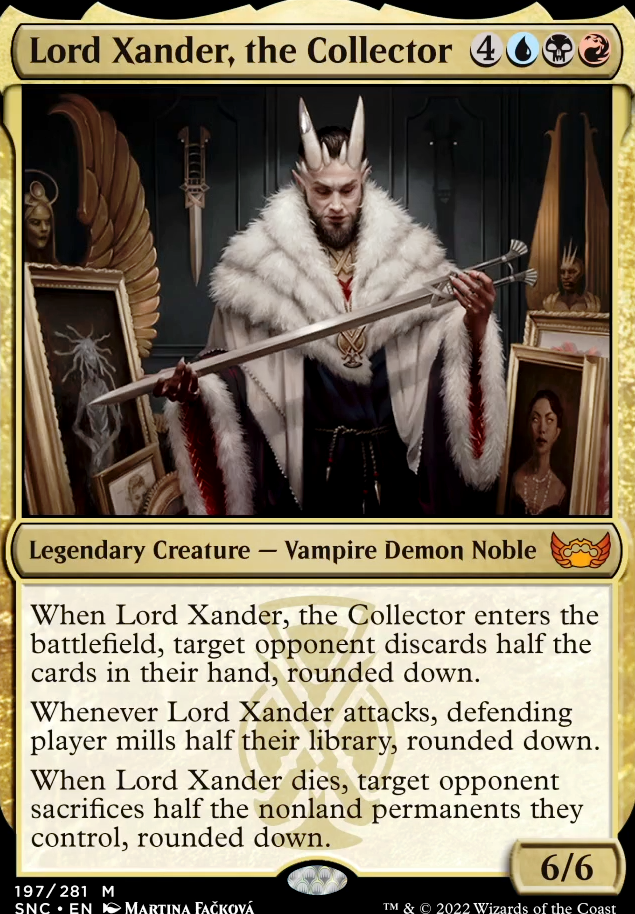
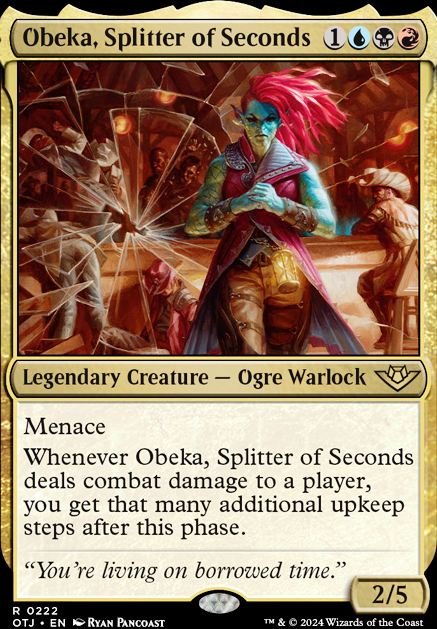
nuperokaso on
 Brian Stacks' Anvil (E)
Brian Stacks' Anvil (E)
1 month ago
- Fill in the format. I suspect Vintage, since you are playing Demonic Tutor.
- What is the budget? If there is none, go with Badlands, Mox Ruby instead of 1 Simian Spirit Guide
- You are playing just 1 blue card, and it's not that much relevant - Windfall. Throw it away and you can then go two-color with much more stable and less painful mana-base. Remove 4 Aether Hub and 4 City of Brass. Play instead 1 Blood Crypt, 1 Raucous Theater, 1 Graven Cairns, 1 Sulfurous Springs, 4 Blackcleave Cliffs
- Memory Jar is an insane card in this strategy, since it causes your opponent to discard 7 cards while it gives you more cards to play. I would replace it for 1 Howling Mine. Jar may well be a reason to still play blue - for Tinker. In that case also replace a few swamps for Vault of Whispers.
ThassaUpYo@ssa on
 Chasm and Depths Protection
Chasm and Depths Protection
5 months ago
Nice list, khuyler! A couple of suggestions that may be helpful:
You have no way to remove The One Ring should you ever need to when it accumulates too many burden counters. It may make sense to run Chaos Warp, Deglamer, and/or Demand Answers to give you an out if you're in a bind with The Precious, but if you don't have a pressing issue with The One Ring these cards are also very useful on their own.
With all of the landfall and ramp including Scapeshift it could be beneficial to add Valakut, the Molten Pinnacle as well as some additional mountains like Blood Crypt & Stomping Ground (maybe run proxies of Badlands & Taiga). This would allow you to deal a massive amount of damage when Valakut, the Molten Pinnacle and a bunch of additional mountains come into play from Scapeshift, plus Valakut would enable additional landfall damage triggers whenever more mountain(s) ETB while it's out.
Overgrown Tomb and Bayou would be solid additions, too. Have you considered running any of the fetchlands?
Ignoble Hierarch is a great mana dork for Jund.
Crucible of Worlds and Zuran Orb synergize well with Lord Windgrace.
Harrow costs the same and is slightly better than Roiling Regrowth imo since the lands wouldn't enter tapped, though you could run both.
Grends27 on What is Your Opinion of …
1 year ago
Grubbernaut that’s a fair point. I guess I look at proxies as a slippery slope - one guy proxies a Taiga, so I proxy a Badlands, then someone else proxies an Imperial Seal to upgrade their Diabolic Tutor and all the sudden our decks are filled with lined-notebook paper proxies instead actual cards.
Every group uses their own rules - the requirement of owning a proxy in my playgroup helps make sure that we’re still actually playing with cards instead of lined notebook paper.
Fluggleshmuggits on
 Cube Eternal
Cube Eternal
1 year ago
Changelog 12/10/22
Original Dual lands are in
2 color man lands are in
upgrades in every color and almost every guild pair
IN
- Cathar Commando
- Gideon, Ally of Zendikar
- Gideon Jura
- Parallax Wave
- Haughty Djinn
- Thirst for Discovery
- Hullbreaker Horror
- Baral, Chief of Compliance
- Liliana, the Last Hope
- Liliana, Waker of the Dead
- Cryptbreaker
- Rotting Regisaur
- Massacre Wurm
- Legion Warboss
- Guttersnipe
- Kiki-Jiki, Mirror Breaker
- Ilharg, the Raze-Boar
- Firebolt
- Tooth and Nail
- Biogenic Ooze
- Niv-Mizzet, Parun
- Sin Collector
- Nahiri, the Harbinger
- Grist, the Hunger Tide
- Escape to the Wilds
- Trostani Discordant
- Natural Order
- Celestial Colonnade
- Creeping Tar Pit
- Lavaclaw Reaches
- Raging Ravine
- Stirring Wildwood
- Shambling Vent
- Wandering Fumarole
- Hissing Quagmire
- Needle Spires
- Lumbering Falls
- Tundra
- Scrubland
- Plateau
- Savannah
- Underground Sea
- Volcanic Island
- Tropical Island
- Badlands
- Taiga
- Bayou
OUT
- Quirion Ranger
- Frost Titan
- Crystal Vein
- Cave of Temptation
- Talisman of Creativity
- Talisman of Curiosity
- Talisman of Conviction
- Talisman of Resilience
- Talisman of Hierarchy
- Strionic Resonator
- Sunken Hollow
- Cinder Glade
- Canopy Vista
- Prairie Stream
- Smoldering Marsh
- Irrigated Farmland
- Scattered Groves
- Canyon Slough
- Fetid Pools
- Sheltered Thicket
- Seal of Cleansing
- Battle Screech
- Eidolon of Rhetoric
- Spirit Link
- Shoreline Ranger
- Deep Analysis
- Attunement
- Rewind
- Fate Unraveler
- Visara the Dreadful
- Ultimate Price
- Ruinous Path
- Bloodsoaked Champion
- Scab-Clan Berserker
- Sin Prodder
- Slice and Dice
- Starstorm
- Firebrand Archer
- Vessel of Nascency
- Seal of Primordium
- Lifecrafter's Bestiary
- Abrupt Decay
- Appeal / Authority
- Wear / Tear
- Rhythm of the Wild
- Unburial Rites
- Enigma Drake
PirateCptAstera on
 A.D.D.
A.D.D.
2 years ago
zAzen7977 on
 KAALIA'S CATACLYSM - Aggro/Stax cEDH [MH3 Update]
KAALIA'S CATACLYSM - Aggro/Stax cEDH [MH3 Update]
2 years ago
Hey Privian, thanks for commenting. You can definitely reduce the cost of the deck by swapping out the cards you listed. Here are my suggestions for replacements:
Plateau > Needleverge Pathway Flip
Scrubland > Brightclimb Pathway Flip
Badlands > Blightstep Pathway Flip
Ravages of War is identical to Armageddon, I just happen to have a copy of Ravages I picked up years ago.
You could also run Mox Opal, but in that case I would also run the Mirrodin artifact lands (ex:Vault of Whispers.)
EVEN-ELITE on
 A Better Rograkh & Tevesh
A Better Rograkh & Tevesh
2 years ago
Turn 1 win hand (probably): Badlands, Lotus Petal, Culling the Weak, Rite of Flame, Pyretic Ritual, Peer into the Abyss, and something else.
Varamil on [Variant] Magic Noir
2 years ago
(printable version : )
Context
Mana management in Magic is not always optimal, and can even be very frustrating if the draw is really unbalanced. Moreover, if lands are vital at the beginning of the game, they usually pollute the deck more afterwards. On the other hand, this is part of the fun of the game and the art of creating effective decks in any situation.
If you really want to optimize a deck, I feel like you often have to use rare (and expensive) lands that allow you to clean up the deck (e.g., Wooded Foothills) or that provide mana in two colors of your choice (e.g., Badlands, Dragonskull Summit).
Anyway, that's the game, but I recently discovered another game that introduces a very interesting mana management mechanism: Mage Noir (check out their site). During my first play tests, I immediately liked the way mana was managed. There is no frustration of not having THE necessary color without swimming in mana, no problem of hand full of lands or no lands during many turns, and this system adds a very interesting tactical side.
The general logic is that each turn, players select 3 mana of the color of their choice. One part goes into their pool, but the other can be retrieved by the opponent on his next turn. So, you have to make your deal, but try not to favor your opponent.
I immediately thought that such a system, if it worked for Magic, would be very pleasant to use. So, I set about creating the variant described here.
Mana Pools
The principle introduced by Mage Noir is that each turn, the active player takes a certain amount of mana from the Infinite Pool and places them in the Channeled Pool. Then he can take some of this Channeled Pool to fill his Personal Pool.
A common feature of all the reserves presented below is that their contents are visible to all players at all times.
The Infinite Pool is composed of 6 mana colors, the 5 classic Magic colors plus the colorless "color" which becomes a color in its own right.
To make this mana pool, arrange the basic lands, face up, in 5 separate piles containing only lands of the same color (one pile of plains, another of islands...). For the colorless color, make a sixth pile with face-down cards (or any other type of card that you will not confuse with the 5 primary colors). These piles must be easily accessible by the players.
Ideally, you should have 20-25 lands in each pile, especially for the colors that are present in the decks that are played.
This pool is a common intermediate pool that will be replenished each turn by the players and after certain events. It is also in this pool that the players will draw to feed their Personal Pool.
It is composed of 2 distinct piles that can contain a varied number and type of mana. These 2 piles exist permanently even if one or both are empty. However, the identification or the positioning of these piles does not matter, they just have to be easily accessible to the players.
The details of its use are described in the paragraph New ability keyword: channeling X.
Corresponds to the classic Magic mana pool, the one that is replenished when you add mana to your mana pool, with the difference that it doesn't empty at the end of your turn.
Note that the direct consequence is that the notion of mana burn does not exist (anymore) in this variant of Magic (do I look old?).
This is a special mana pool used in special cases. It is mainly used to make certain mana of a player temporarily inaccessible. Each player has his own Stasis Pool.
See §Effects Involving Lands for full details, but in general, all effects that engage land or prevent land from being untapped will instead send mana from the Personal Pool into the Stasis Pool. How to recover this mana then depends on the effect.
Mana management
In this variant a new keyword appears: channeling X. It corresponds to an action which consists in:
-
Take X mana from the Infinite Pool,
-
Add them, one by one and alternately, to the two piles of the Channeled Pool, starting with the smallest pile. An empty pile is considered to be the smallest possible pile, and in case of a tie, the player performing the action chooses the pile.
This action cannot be interrupted from the moment it was started. No player (nor the player performing the channeling) may perform any other action until all the mana involved by the channeling has been added to the Channeled Pool.
If there is more than one mana involved (X ≥ 2), then the player performing the channeling chooses the order of adding mana
The X next to the keyword indicates the amount and type of mana the player can take from the Infinite Pool. It can be of several kinds:
-
A number: the player can take as much mana as the indicated quantity, distributed according to the colors of his choice, the mixture being completely possible. The colorless mana is a possibility as well as the "classic" colored mana.
-
Colorless mana (respecting the iconography of Magic: , ...): the player must take the indicated amount of colorless mana. He can't take white, blue, red, black or green mana instead.
-
Colored mana: the player must take a mana of the indicated color.
Here are some examples:
-
Channeling 2: the player chooses 2 mana of any color.
-
Channeling : the player takes 1 colorless mana and 2 blue mana.
On the side of the Channeled Pool, if for example the A pile contains 2 mana, and the B pile contains 3 mana, then for a channeling , the player can:
-
Add to pile A
-
Then to pile B
-
And to pile A.
The order in the example could be or , but the A pile will always (in this case) have 2 more mana at the end of the action, and the B pile only 1 more mana.
The focus consists of taking X mana from the Infinite Pool and put it directly into your Personal Pool.
However, the mana thus recovered is returned to the channeled reserve at the end of the current turn if it has not been used (i.e. as for mana in the classic rules).
The same rules as for the channeling apply in terms of color restriction (ex: 2 ≠ ).
Ability to take X mana from a player's Personal Pool and place it in that player's Stasis Pool. Unless otherwise noted, the mana from the Stasis Pool returns to the player's Personal Pool during his next land clearing step.
The same rules as for the channeling apply in terms of color restriction (ex: 2 ≠ ).
The player who is the target of a dissipation must return X mana from his Personal and/or Stasis Pool to the Infinite Pool. If he does not have enough mana available, he must empty both his reserves.
The same rules as for the channeling apply in terms of color restriction (ex: 2 ≠ ).
During the untapping step, the active player additionally recovers mana from his Stasis Pool and places it in his Personal Pool, unless the mana was placed in stasis by an effect that specifies a particular condition for mana recovery (see §Effects Involving Lands).
After the draw step, during the beginning of the turn phase, a new step is added: the channeling. This step takes place as follows:
-
The active player will make a channeling 3, it cannot be countered in any way.
-
Players can then play instant, activate abilities (mana or not) following the classic Magic rules. Rituals and invocations (except flash) cannot be played.
-
Finally, the active player chooses one of the two piles from the Channeled Pool and adds it to his Personal Pool.
The step is optional, but if it is done, it must be done in full. Moreover, if it is done, the player cannot play any more lands from his hand during this turn (except for the effect of a spell).
Thus, during the channeling, the active player must choose whether he prefers to place a land or to take mana from the Channeled Pool.
As soon as a card indicates that you can add any number of mana to your mana pool (lands, abilities, spells...) you must make a focus X instead, where X is exactly the mana indicated in the initial text.
So add to your mana pool becomes focus .
However, if the card that allows you to make a channeling is a land, you must sacrifice it and put it in your graveyard. Note that if an ability of a land is used and it does not generate mana, the land is not sacrificed, the land behaves as a simple permanent.
To pay the mana cost of a spell or ability, you must use the mana in your Personal Pool. The rules are as follows:
-
Colored mana has to be paid with mana of the same color,
-
Colorless mana has to be paid with mana of a different color than the card or with colorless mana. For example, the colorless mana of a red card cannot be paid with red mana, but a mixture of other colors can be used, not necessarily a single color. For multicolored cards, the possible colors are those that do not appear in the colored part of the spell casting cost (so for abilities you have to look at the spell casting cost and not the ability cost). The goal is to force monochrome decks to vary the amount of mana they channel, so that in the end they are not at an advantage over multicolored decks.
-
For artifacts, creatures with Devoid, or any other colorless card, the colorless mana cost must be paid with at least half the cost rounded up in colorless mana, with the rest of the cost to be paid with any colored mana. For example, an artifact with a summoning cost of 3 or 4 should be paid with 2 colorless mana and the rest in colored mana. As colorless mana becomes a color in its own right, the goal is to approach the same constraints as for colored costs.
-
Sunburst: no change except for colorless cards. For these, in order not to reduce the effect too much, the rule is adjusted. Colorless mana that normally must be used may be replaced by a colored mana if and only if only one mana of that color is used to pay the cost. For example, for a cost of with Sunburst, or can be used, but not . Colorless mana still does not count towards the effects of Sunburst.
This defines the mana to be used to pay the cost. The use of the mana thus spent depends on the type of card:
-
Cost to summon a Permanent: Mana stays with the permanent. Slide the spent mana under the permanent card. Ideally, you should put the cards in a staircase so that the mana attached to the permanent is always visible. If the permanent leaves the battlefield, the mana that was attached to it returns to the Channeled Pool following the same rules as for channeling (except that the mana does not come from the Infinite Pool).
-
Otherwise (spell, ability...): once the effect is resolved, the mana that has been spent returns to the Channeled Pool following the same rules as for channeling (except that the mana does not come from the Infinite Pool).
Remarks:
- Ability color restrictions are based on the color of the card with the ability, even if an opponent has to pay the mana cost in the end. Ex: Mystical Dispute: the cost of must be paid with non-blue mana.
Adjustment of rules
As mana management is totally different and the interest of lands becomes limited (as they are single-use, see Activation of mana abilities), it is no longer necessary to build a deck with lands. As a result, the minimum number of cards that a deck must contain is reduced to 40 cards instead of 60 (lands usually represent about one third of a classic deck).
Regarding lands, they are still allowed but there is now a limit of 8 lands in a deck, and each land (identical name) can only be present 4 times. Moreover, as mentioned in §New game phase: Channeling, a land can only be put into play from the hand if the player has not channeled this turn.
Ideally, you should limit the cards to a maximum of 3, if you are making a deck specifically for this variant, but the goal is to be able to play easily, so the easiest thing to do is to just remove the lands from your existing decks and enjoy!
Nevertheless, a number of effects must be adapted to the new number of cards.
As mentioned in the previous paragraph, some general rules must be adjusted:
-
The starting hand is 5 cards instead of 7, but the (basic) maximum number of cards remains 7.
-
All effects based on the number of cards in a library must consider a number of cards divided by 2, rounded up. If the targeted player's library has less than 20 cards [...] becomes If the targeted player's library has less than 10 cards [...]. Or Put the top 3 cards of the targeted library under it becomes Put the top 2 cards of the targeted library under it.
-
By extension, all the effects of draw, mil, scry... also have the number of cards concerned divided by 2, rounded up.
-
Spell casting costs including a cost in : Since mana can be accumulated from turn to turn, it can be easier to cast overpowered spells. Therefore, the cost of mana in must be multiplied by 2, so (so if the cost was already , then it becomes !).
-
Effects involving a number of lands are generally replaced by a devotion on the associated color (affinity, crossing...). See §Effects Involving Lands for more details.
-
Number of lands of a color: replaced by a Devotion to the concerned color. For artifact lands consider a devotion to the colorless divided by 2, rounded down.
-
Basic Land Affinity: to determine the cost reduction, consider that you have as much land as the value of your Devotion to the color of the land concerned. Ex: Affinity with Swamps => the cost of the spell can be reduced by X colorless where X is your Devotion to Black.
-
Improvise: no change.
-
Land cycling: the player can perform a Channeling 2, but only using mana of the color of the indicated field. Ex: Mountain Cycling = Channeling .
-
Landfall: is triggered if a land has actually been put into play, or if an effect/spell that should have put a land into play is resolved (but has in fact been replaced by a focus, see the point above). Channeling and focus do not therefore by default trigger the ability.
-
Landwalk:
-
Possible as soon as a mana of the concerned color is attached to a permanent of the targeted opponent. Ex: Mountainwalk => creature cannot be blocked as long as there is Red mana attached to an opponent's permanent.
-
In the case of supertype (e.g., legendary land), then the creature cannot be blocked as long as the opponent has a permanent of the specified type (e.g., legendary creature/enchantment)
-
In the case of subtypes (e.g., snowy forest), then the subtype is ignored.
-
For the next effects, the following rules apply in general:
-
If the initial effect specifies a (combination of) land color, then the targeted mana must be of the same (combination of) color.
-
For artifact lands, consider colorless mana.
-
If the number of targeted lands is 2 or more, a combination of land and mana can be used respecting the indicated ratio.
-
If the effect requires a quantity to be resolved, the player must respect the quantity requested (either in land or in mana). If there is not enough land/mana the spell cannot be resolved.
On the effects side, they can be replaced by:
-
Tap X Lands (spell effect): stasis X. Ratio of 1 land to 1 mana.
-
Untap X Lands (spell effect): focus X. Ratio of 1 land to 1 mana.
-
Destroy X Lands: dissipation XX. Ratio of 1 land to 2 mana.
-
Sacrifice X Lands: dissipation XX. Ratio of 1 land to 2 mana.
-
Return X lands to his owner's hand: stasis XX. Ratio of 1 land to 2 mana.
-
Exile X land: dissipation XX. Ratio of 1 land to 2 mana.
-
Put X land into play (spell effect): focus X. If the lands arrive in play tapped, then the mana is placed in the Stasis Pool instead of the Personal Pool. Ratio of 1 land to 1 mana.
-
Exile: the mana attached to the exiled card (if it was in play) remains attached to the card during its exile, and returns with it if it leaves the exile.
-
Ingest: no change because it concerns only one card.
-
Mil: the number of cards is divided by 2, rounded up.
-
Monarch: no change because it concerns only one card.
-
Scry: the number of cards is divided by 2, rounded up
-
Ripple: the number of cards is divided by 2, rounded up.
-
Threshold: no change, the other adjustments mean that normally the cemetery does not fill up much faster.
-
Sunburst: no change except for the colorless cards (see §Pay a mana cost)
-
Surveil: the number of cards is divided by 2, rounded up.
It is likely that some cards will become too strong with the new mana mechanics, if this is the case then it would be wise not to use them. Here is a non-exhaustive list of such cards:
- To be defined, feel free to send me cards that should be banned.
However, if possible, if by slightly adjusting the text of the card it is possible to return to an acceptable effect (compared to what it can produce with the classic rules), then it can be used. Here is a non-exhaustive list of such cards:
-
Mind Funeral: will probably mill the whole deck at once, but if we consider Mil 8 instead (so that 4 cards are actually discarded, see §Abilities) then the card becomes fully playable again. You can also consider rolling a die to discard 4+X cards.
-
Feel free to send me other cards that should be adjusted.
The main thing in these cases is to reach an agreement between players before starting the game.
Improve the game material
Mage Noir also uses cards to symbolize mana, but in the end using tokens of adapted colors makes the management much simpler: it takes much less space, it is easier to identify the mana, when tapping/untapping you don't need to manage the piles so that the mana remains visible...
Personally, I use colored plastic crystals, but cubes, discs, wood or plastic (metal?) are just as good, the trick is to have the right colors if possible.
Clearly, it's not necessary, but it makes the game much more enjoyable, I think.
Conclusion
These rules have been tested on a number of different decks: aggro, mil, tribal, discard, madness... but never played at a competitive level. I did not observe any noticeable imbalance, I even found that some "less good" decks managed to compete better against the other decks.
The mana management is less random, more balanced between players, there is really a tactical aspect on the choice of mana or on the fact to destroy a permanent. The mana curve is no longer linear, there are strong moments and weak moments, a bit like in a real fight, where when you have just cast a big spell, you are a priori a bit out of breath.
I've been away from Magic for a while, but this idea really motivated me to come back to it and in the end, I really enjoyed playing it again using this variant.
So, I hope you'll have fun testing it, and giving me feedback to improve it!


![Wernog & Sophina, Innistrad Militia [PRIMER] thumbnail](http://static.tappedout.net/chart/50-0-20-30-0-small.png)











